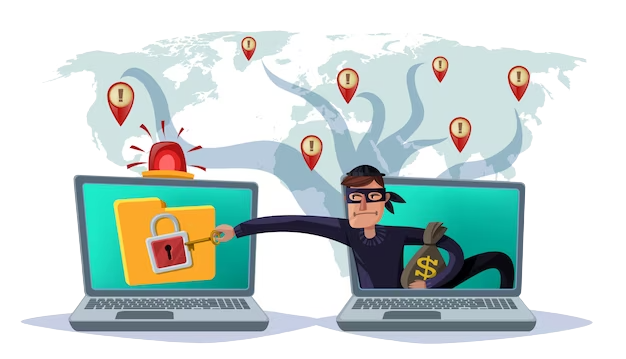Proactive Measures For Phishing Attack Prevention
Phishing attacks continue to be one of the most prevalent and dangerous cyber threats faced by individuals and organizations alike. These attacks involve malicious actors attempting to deceive users into divulging sensitive information such as passwords, credit card details, or social security numbers.
Phishing attacks can have severe consequences, including financial loss, identity theft, and data breaches. However, by implementing proactive measures, individuals and organizations can significantly reduce the risk of falling victim to these attacks. In this article, we will discuss some effective proactive measures for phishing attack prevention.
Employee Education and Training
Phishing attacks often target individuals within an organization, exploiting their lack of awareness and knowledge about such threats. Educating and training employees is a vital step in preventing phishing attacks. Consider the following measures:

- Conduct regular phishing awareness training sessions: Train employees to identify phishing emails, suspicious links, and deceptive websites. Teach them to scrutinize emails for red flags such as spelling mistakes, unfamiliar senders, and urgent requests for personal information.
- Simulate phishing attacks: Periodically test your employees' preparedness by sending simulated phishing emails. These exercises help identify knowledge gaps and provide an opportunity for further training and improvement.
- Provide resources and reference materials: Equip employees with resources such as phishing prevention guidelines, a list of common phishing indicators, and reporting procedures. Ensure they have easy access to these materials for future reference.
Robust Email Security
Email remains the primary channel through which phishing attacks are launched. Strengthening email security can significantly reduce the risk of falling victim to such attacks. Consider the following measures:
- Implement email filtering and spam detection: Utilize robust email filtering solutions that can identify and block suspicious emails. These systems employ algorithms to detect common phishing patterns and prevent malicious messages from reaching the inbox.
- Enable multi-factor authentication (MFA): Require employees to enable MFA for email accounts. This adds an extra layer of security by verifying the user's identity through multiple authentication factors, such as a password and a unique code sent to their mobile device.
- Use email encryption: Implement email encryption to protect sensitive information from interception by unauthorized individuals. Encryption ensures that even if an attacker gains access to an email, they cannot decipher its contents.
Web Browsing Security
Phishing attacks are not limited to emails alone. Cybercriminals also exploit vulnerabilities in web browsers to trick users into divulging sensitive information. Consider the following measures to enhance web browsing security:
- Keep software up to date: Regularly update your web browsers, plugins, and operating systems to ensure you have the latest security patches. Outdated software often contains vulnerabilities that attackers can exploit.
- Install browser extensions: Utilize reputable browser extensions that provide additional security features, such as anti-phishing protection and website reputation ratings. These extensions can help identify and block malicious websites.
- Implement website filtering: Use web filtering solutions that block access to known phishing websites. These solutions leverage blacklists and machine learning algorithms to identify and proactively block access to malicious domains.

Ongoing Monitoring and Incident Response
Maintaining a proactive approach to phishing attack prevention requires continuous monitoring and swift incident response. Consider the following measures:
- Monitor network traffic and logs: Regularly review network traffic logs to identify any suspicious activity or attempts to access phishing-related domains. Implement intrusion detection systems (IDS) and intrusion prevention systems (IPS) to detect and block malicious traffic.
- Establish an incident response plan: Develop a comprehensive incident response plan that outlines the steps to be taken in the event of a phishing attack. Ensure all employees are aware of the plan and their roles in mitigating and reporting incidents.
- Foster a culture of reporting: Encourage employees to report suspicious emails, websites, or any potential security breaches promptly. Establish clear reporting channels and provide guidance on how to report incidents effectively.
By implementing these proactive measures, you can significantly reduce the risk of falling victim to phishing attacks. Remember that cybersecurity is an ongoing effort, and staying updated on emerging threats and best practices is essential to maintaining a secure digital environment.
In short, implementing proactive measures for phishing attack prevention is essential to safeguard your organization's sensitive information and prevent financial losses. By educating employees on how to identify and report suspicious emails, implementing multi-factor authentication, and regularly updating security software, you can significantly reduce the risk of a successful phishing attack. It is also crucial to stay updated on the latest phishing techniques and trends to ensure that your defense mechanisms remain effective. Remember, preventing a phishing attack is always better than dealing with the consequences of a successful one.